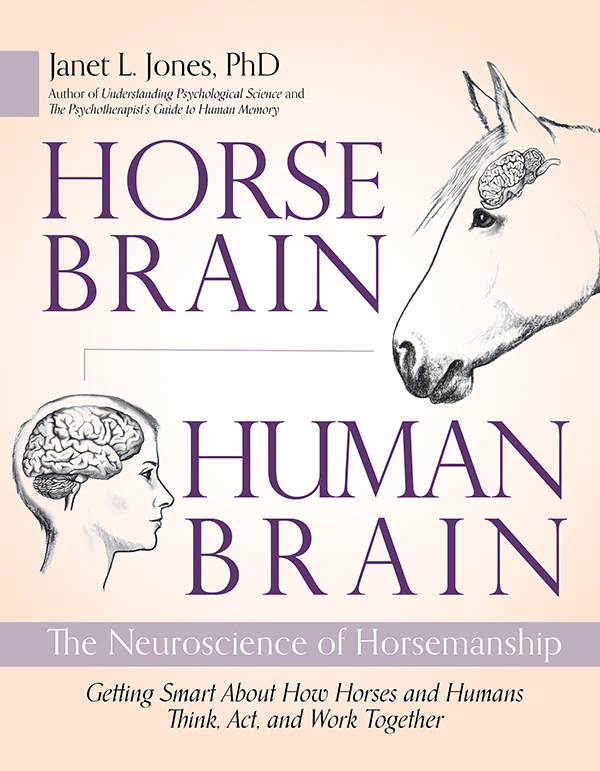TRUE TRAINING 64 - My Space
True came to me with good halter and leading skills, thanks to an excellent breeder, but I began groundwork with him on Day One. Groundwork is important for safety and training. Safety is critical with a size differential of 150 pounds for the average human and 1200 pounds for the average fast-moving horse. But groundwork also teaches horses to pay attention to their trainers, consider the location of their feet, and yield their hips and shoulders in all directions at the trainer’s request. Over time, these lessons transfer to more advanced groundwork, ground manners, and the horse’s work under saddle.
What I call “space” groundwork is the starting point, teaching horses in a kind way to keep a respectful distance from their human guides. Teach the standstill first. Using a halter and lead, ask the horse to halt and offer non-edible rewards (strokes, praise) when she does. Stand still near her head and watch her feet. Each time she moves a foot, gently bump her halter to move that foot back into its original position. Reward again, with a stroke or kind verbal tone.
Some horses stand still very readily; others do not. With a very wiggly horse, you might want to start this lesson at the end of some active physical work. The tired horse is more willing to stand still. Also, start the standstill lesson in a familiar quiet place where the horse feels comfortable. The standstill in busy locations is a more advanced move that comes later.
This process of repeatedly correcting foot position is pretty frequent at first. But within a few sessions (each perhaps 5 minutes long), the horse learns that standing still is the desired behavior. When she will stand on a loose lead rope without moving her feet for, oh, say two minutes, you can proceed to the space lesson.
(An important digression – a “loose” lead rope does not mean a long lead rope. Hold the lead about 2 feet away from its connection to the halter, but leave slack in the rope.)
To teach spatial boundaries, I halt True and he stands attentive to me. I’m standing perhaps 18” from the side of his nose. Now, I take a small step back. True automatically takes a small step forward. It’s as if he’s trying to maintain that 18” distance. But I want to teach him that humans need more space. So I gently bump the halter so that he moves that foot back to its original location. When he stands still there, he gets more strokes and verbal praise.
This process continues, so that I take a step back or away from True’s nose, neck on each side, and shoulder. He is always allowed to move his head or neck, but the feet are to stay rooted to the ground in their original location. Each time I move, if he moves a foot, I bump it back. Short sessions work best—10 minutes maximum on a given day. And the entire process is gentle, quiet, easy. Forcing, man-handling, or getting frustrated only makes the lesson harder for the horse to learn.
Soon True learns to maintain a greater distance from me, perhaps 3’. He learns that he is not to move his feet forward until I ask for that. He learns to pay close attention to the movement of my feet.
Over time, you can expose the horse to groups while he maintains his position. True is super sociable—he wants to be part of all human conversation, so he tends to creep forward when I chat with friends while holding him. An occasional gentle bump on the halter reminds him to take a respectful step back. He’s still right there with us, but he’s not in our laps! All of this will transfer in positive ways to his future training on the ground and under saddle.
People sometimes complain that they don’t want their horse to maintain a distance. Rather, they want to hug their horses and rest their faces against horse fur! Well, that’s fine; this exercise doesn’t preclude that. The human can step forward into the horse’s space at any time, as close as she wishes. But the horse learns not to step forward into the human’s space. It might seem like a subtle difference at first, but as training proceeds, it becomes important.
Give standstills and simple spatial boundaries a try! Later, I’ll add posts that explain how to proceed.

